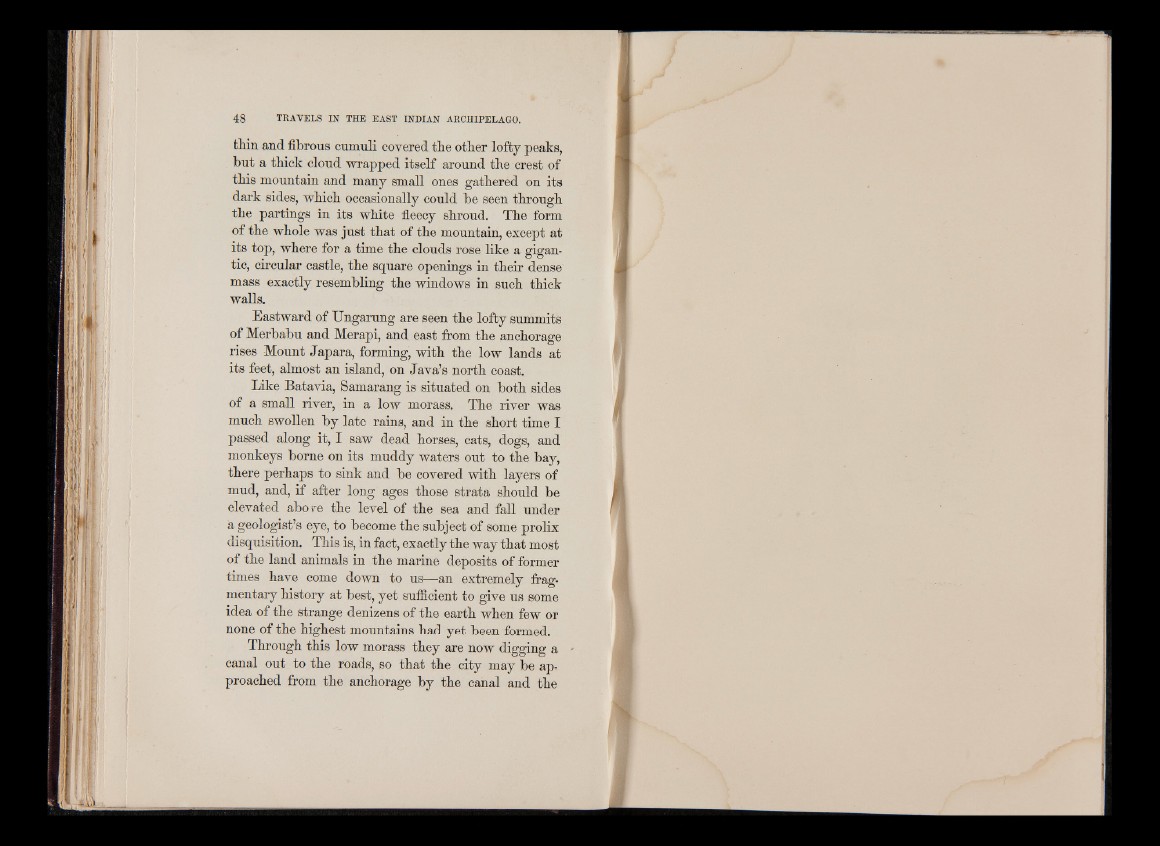
thin and fibrous cumuli covered the other lofty peats,
but a thick cloud wrapped itself around the crest of
this mountain and many small ones gathered on its
dark sides, which occasionally could be seen through
the partings in its white fleecy shroud. The form
of the whole was just that of the mountain, except at
its top, where for a time the clouds rose like a gigantic,
circular castle, the square openings in their dense
mass exactly resembling the windows in such thick
walls.
Eastward of Ungarung are seen the lofty summits
of Merbabu and Merapi, and east from the anchorage
rises Mount Japara, forming, with the low lands at
its feet, almost an island, on Java’s north coast.
Like Batavia, Samarang is situated on both sides
of a small river, in a low morass. The river was
much swollen by late rains, and in the short time I
passed along it, I saw dead horses, cats, dogs, and
monkeys borne on its muddy waters out to the bay,
there perhaps to sink and be covered with layers of
mud, and, if after long ages those strata should be
elevated abore the level of the sea and fall under
a geologist’s eye, to become the subject of some prolix
disquisition. This is, in fact, exactly the way that most
of the land animals in the marine deposits of former
times have come down to us—an extremely fragmentary
history at best, yet sufficient to give us some
idea of the strange denizens of the earth when few or
none of the highest mountains had yet been formed.
Through this low morass they are now digging a
canal out to the roads, so that the city may be approached
from the anchorage by the canal and the